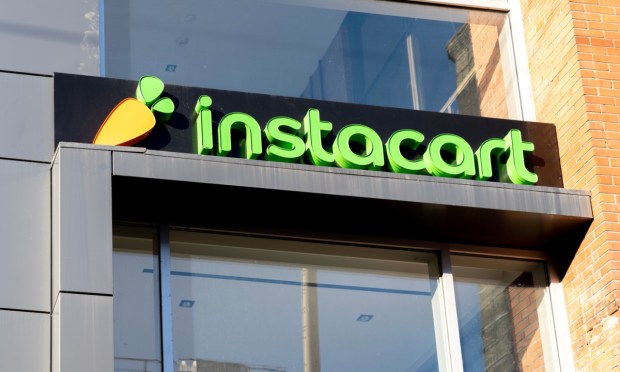Instacart’s IPO Approaches Amid eGrocery’s Exponential Growth

Instacart’s upcoming initial public offering (IPO) will arrive at a time when the grocery sector is poised for rapid growth, as today’s young consumers mature.
The aggregator could go public as soon as next week. The news comes as many consumers are increasing their online grocery adoption.
PYMNTS Intelligence from the study “Tracking the Digital Payments Takeover: Catching the Coming eCommerce Wave,” created in collaboration with Amazon Web Services (AWS), revealed that 32% of shoppers said they are very or extremely likely to increase their online grocery purchases in the next year.
Taking a longer view, this growth will be helped by younger generations’ disproportionate adoption of digital channels compared to their older counterparts. PYMNTS’ report “Changes in Grocery Shopping Habits and Perceptions,” found that across generations, 46% of shoppers buy at least some grocery products online. That share jumped to 59% for Generation Z, 64% for millennials, and 62% for bridge millennials.
Given young consumers’ relative preference for these digital channels, it appears clear that as they age and future generations mature into adult consumers, eGrocery’s share will only continue to grow in the decades ahead.
Online grocery has been growing rapidly in recent years, with adoption supercharged by the events of 2020. Instacart noted in its Form S-1 with the Securities and Exchange Commission (SEC) for its proposed IPO that in the decade between 2009 and 2019, online grocery penetration increased from 1% of the overall grocery market to 3%, and then, in the following three years to 2022, it quadrupled to 12%.
However, Instacart noted, while digital is playing a growing role in grocery, the industry has been slower than others to shift to eCommerce, given the unique challenges associated with the business model.
“Grocery retail is characterized by diverse consumer behaviors, complex inventory management and fulfillment, lack of integrated omnichannel data, a shortage of technology that is custom-built for online grocery, a disaggregated supply chain, and a low operating margin,” Instacart’s filing stated.
Major grocers have been noting significant growth in their digital channels as well. Walmart, the world’s largest grocer, saw U.S. eCommerce sales increase 24% year over year in its most recent quarter, with weekly active digital users up by more than 20%.
Additionally, Kroger, the country’s largest pure-play grocer, reported a 12% digital sales increase in earnings released Sept. 8, helped by its addition of automated pickup lockers and by growth in delivery from its in-house eCommerce fulfillment centers. Plus, multinational grocer Ahold Delhaize saw U.S. online sales up 7% in its last quarter.
“Although consumers are eager to reengage in the physical world, increasing numbers aren’t that interested in spending their time shopping for groceries that way,” PYMNTS Karen Webster observed in an August feature. “At least not in the way that they did pre-pandemic. It seems clear that the shift is permanent and increasing.”
